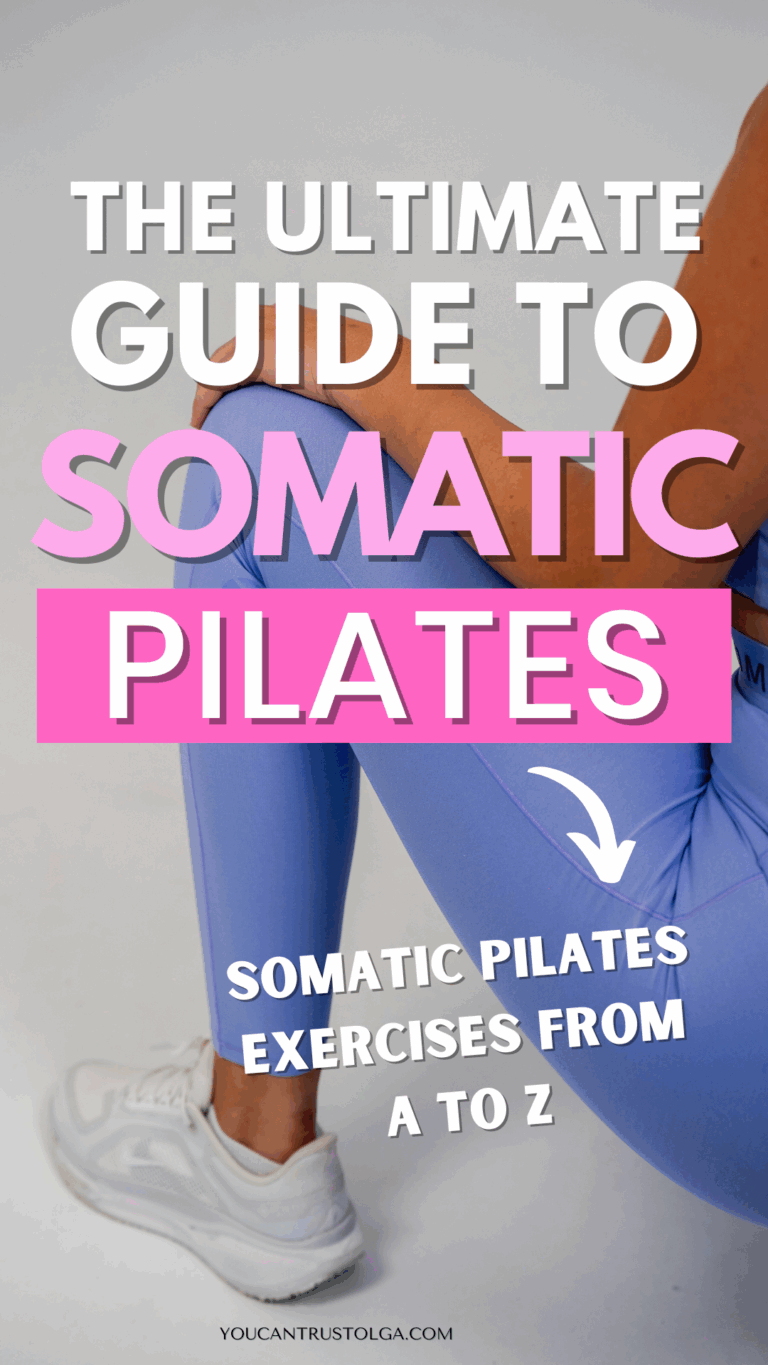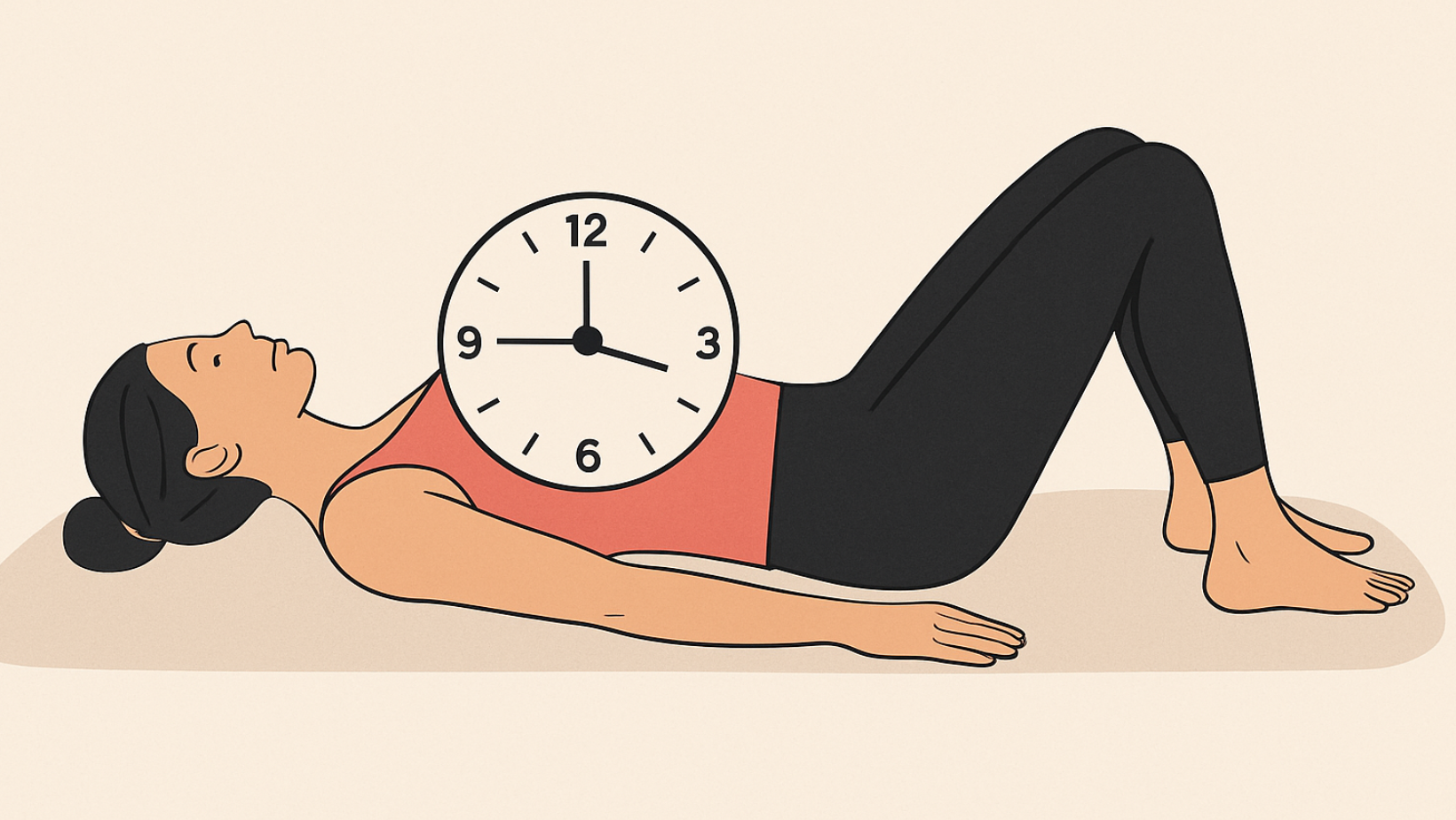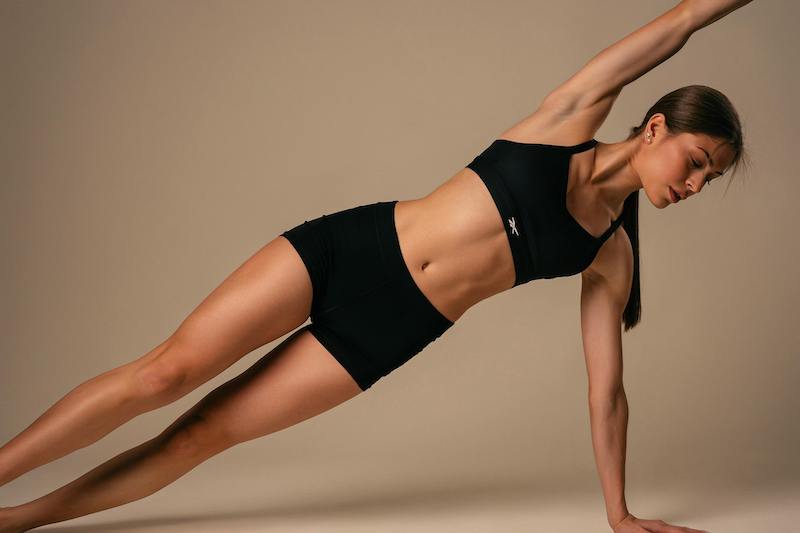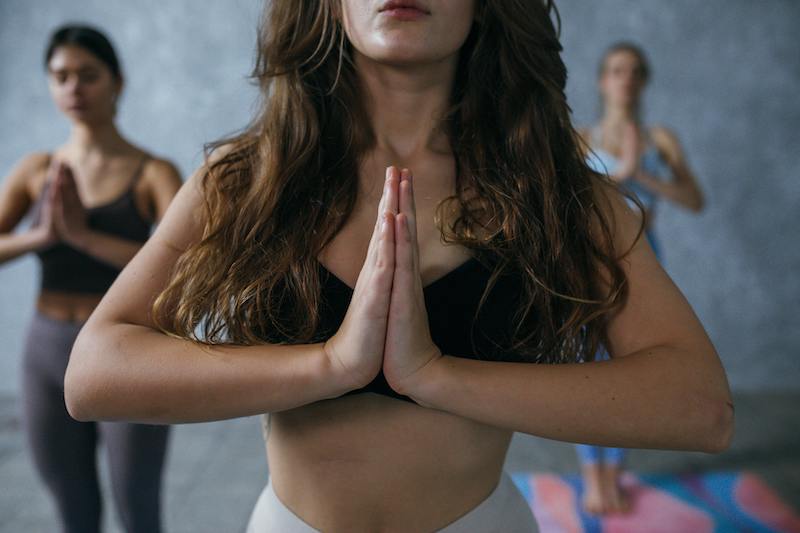Somatic pilates is getting bigger as we talk. And while we do, others already enjoy its benefits.
Indeed, in the past decade, there has been a rise of somatic movement, where the focus shifts from how an exercise looks to how it feels. Somatic therapy with somatic exercise takes center stage and offers a body-centered approach to healing, turning it into holistic healing.
With searches for “somatic pilates exercises” and “what is somatic pilates?” soaring, I dove into the practice myself to uncover what makes this body-centered workout so transformative and how you can use it for maximum benefit. Let’s get to it!

One of the most common things people ask on the internet is: What exactly is somatic pilates? And how is it different from regular pilates? Others wonder if it can help with weight loss or what the actual benefits are. These are all fair questions.
Somatic pilates is still a relatively new concept to many, so it’s only natural to want to understand where it fits.
We like to place things into clear categories in our minds, and this one doesn’t always fit into the traditional “fitness” box. Because it is more than just a workout.
So what is it?
what is somatic pilates?
Somatic pilates is a blend of pilates exercises and somatic movement principles. It aims to enhance body awareness, strengthen the mind-body connection, and help you move in a way that feels natural, balanced, and pain-free.
On one side, somatic pilates teaches you to tune into your own body signals and notice the patterns. On the other hand, it helps you to strengthen your body through focused exercises.
That’s what makes somatic exercising a MINDFULNESS-BASED practice. Meaning that at the same time, you are giving a workout to both – your body and your mind.
what is somatic pilates vs pilates?
Somatic pilates is a more mindful, slower-paced approach compared to traditional pilates, focusing on how movements feel from the inside out, rather than just how they look.
With somatic movements being usually gentler and slower, you focus mostly on breath, sensations, and alignment.
Also, somatic pilates exercises require less equipment and involve more mat-based work.
Additionally, the purpose of a somatic workout is not just to support injury recovery or reduce stress, but also to help individuals reconnect with their bodies.
This is why somatic practices are often regarded as more healing and spiritually grounding in nature.
what are the benefits of somatic pilates?
As I have noticed before, somatic pilates supports both PHYSICAL and EMOTIONAL healing. It is considered to be a special form of healing: it is a deeply grounding and trauma-informed practice.
By intentionally slowing down and tuning into the sensations of the body, you create space for self-inquiry, self-healing. Over time, this consistent awareness helps rebalance what’s happening inside the body, making space for both emotional resilience and physical ease.
This mindful approach is especially beneficial for those recovering from injury, living with autoimmune conditions, or navigating the long-term effects of trauma.
Through this practice, the mind and body begin to reconnect, fostering a greater sense of internal balance and clarity of mind.
Somatic pilates exercises are designed to increase body awareness, improve posture, and gently restore range of motion—all while keeping the nervous system regulated and grounded.
That being said, somatic pilates doesn’t just offer fitness—it offers HOLISTIC HEALING. It teaches us how to stay present, how to listen, and how to honor the body’s signals.
Just check out this impressive list of what somatic pilates can do:
Helps release chronic tension held in the body
Supports healing from injury or trauma
Increases body awareness and mindfulness
Improves posture and alignment
Restores natural, pain-free movement
Strengthens the core and stabilizing muscles
Encourages nervous system regulation and grounding
Reduces stress and helps you stay present
Builds a deeper connection between mind and body
Supports emotional release and clarity
Gently rehabs the body after physical or emotional stress
Encourages self-inquiry and body trust
Complements holistic healing and therapeutic work
Helps rebalance the body from the inside out
Invites a calm, safe space to move and feel
Somatic Pilates Exercises and Cortisol levels
One of the amazing benefits of somatic pilates that is worth mentioning separately is its ability to lower stress hormones.
I’m sure you’ve heard about cortisol face or cortisol belly.
Cortisol is our body’s main stress hormone. It rises when we feel overwhelmed, anxious, burned out, or stuck in survival mode. When cortisol stays high for too long, it can impact sleep, digestion, energy, mood, and even weight.
Somatic pilates helps lower cortisol levels by bringing your nervous system out of fight-or-flight and into a calmer, more grounded state. Through slow, mindful movement, breath awareness, and a deep focus on sensation, your body begins to feel safe again.
And when your body feels safe, it can finally let go.
Over time, this practice can help regulate your stress response, improve sleep, reduce inflammation, and boost overall resilience. It’s a nervous system reset—through movement that nourishes rather than depletes you.
This isn’t just about relaxing for a moment. It’s about rewiring your stress patterns so your body can live in balance again.
"Somatic Pilates" by V. Germain
Feel better in your body with easy, step-by-step Somatic Pilates exercises you can do at home! This book helps you release tension, build strength, and move more freely—with clear instructions, helpful images, and video tutorials to guide you. Whether you're a beginner or just want to feel more connected and comfortable in your body, this is your go-to guide for pain-free, mindful movement.
Can you lose weight with Somatic pilates?
Great question—and one that comes up a lot. Here’s a clear, honest, and supportive way to answer it.
The short answer is: possibly, but that’s not really the main goal.
Somatic pilates isn’t focused on burning calories or pushing your body to its limits. It’s about slowing down, tuning in, and healing.
That said, when you release tension, improve how your body moves, and regulate your nervous system, your entire system starts working more efficiently—including your metabolism.
Many people find that as they reconnect with their bodies, they naturally start making choices that feel better for them – whether that’s around food, movement, rest, or stress.
So while weight loss might not be the focus, positive changes in how your body feels, functions, and even looks can definitely happen over time.
It’s more about sustainable, inside-out well-being than chasing numbers on a scale.
Principles of somatic movements
Before you start trying out somatic pilates exercises, take a moment to get familiar with its KEY PRINCIPLES.
Understanding these will save you time and effort. When you practice it with the right approach, somatic pilates can work wonders for your body and mind.

Start Slowly: Somatic pilates emphasizes mindfulness and body awareness, so it’s important to start slowly and pay attention to how your body feels during each movement. Don’t rush through the exercises—take your time to feel every movement and adjust as needed.
Focus on Breathing: Your breath is a vital part of somatic pilates. Focus on deep, slow breathing to help activate muscles, release tension, and maintain control during movements. Inhale through the nose and exhale through the mouth in a rhythm that aligns with your movements.
Stay Mindful and Present: One of the most important aspects of somatic pilates is awareness. As you perform each movement, focus on how your body feels. Notice areas of tension or discomfort and adjust accordingly.
Move with Control and Precision: Avoid jerky or fast movements. Somatic pilates encourages slow, CONTROLLED movements. Precision in your movements will help reprogram your muscles and nervous system, making it easier to move more efficiently.
Listen to Your Body: Always be aware of any discomfort or pain. If something doesn’t feel right, modify the movement or stop altogether. Somatic pilates is meant to be gentle and healing, so it’s important not to push yourself beyond your current abilities or tolerance.
Focus on Alignment: Proper alignment is key to preventing injury and maximizing the benefits of the exercises. Pay attention to how your spine, pelvis, and joints are positioned. This will help create a stable foundation for your movements and improve overall posture.
Release Tension Gradually: Somatic pilates aims to release deep-seated tension in the body. BE PATIENT with yourself as you allow muscles to relax and reset.
Cultivate Patience: Results from somatic pilates may not be immediate, especially when addressing chronic pain or long-held tension patterns. Be patient with yourself and trust that progress will come with consistent, mindful practice.
Respect Your Limits: Especially if you’re new to pilates or have a history of chronic pain or injury, it’s important to respect your limits. Gradually increase the intensity and complexity of the movements as your body becomes stronger and more accustomed to the practice.
Seek Guidance if Needed: If you’re unsure about proper technique or have specific concerns (such as an injury or chronic pain), consider working with a certified somatic pilates instructor.
examples of somatic pilates exercises
Let’s take a look at a few somatic Pilates exercises that will give you a better visual idea of what they look like in practice.
Remember to approach each movement slowly, with intention and curiosity.
Pelvic Rocker Core Trainer
Upgrade your somatic pilates training with a platform for pelvic tilt exercise. Balance Disc helps you strengthen your core, improve posture, and move with more ease. Perfect for sitting or lying exercises, it adds a fun and helpful challenge to your routine while keeping things low-impact and beginner-friendly.
1. pelvic clock
Focus: Pelvic awareness, core activation, spinal articulation
How:
Lie on your back with knees bent, feet flat.
Imagine a clock face on your pelvis: 12 o’clock is your belly button, 6 is your pubic bone.
Slowly and gently tilt your pelvis toward 12, then 6, and then explore side-to-side (3 to 9).
Make a full circle with your pelvis, slowly and mindfully.
2. leg slides
Focus: Hip mobility, core connection
How:
Lie on your back, knees bent.
Slowly slide one leg out along the mat while keeping your pelvis stable.
Bring it back in with control.
Focus on sensing the pelvis and core engagement throughout the motion.
3. Somatic Single Leg Stretch (Modified Pilates Version)
Focus: Core control, hip mobility, breath awareness
How:
Lie on your back, one knee pulled toward chest, the other extended.
Inhale to switch legs, exhale as you gently pull the opposite leg in.
Go slowly, syncing breath with movement.

4. Wall Roll Down with Soft Knees
Focus: Spinal articulation, somatic awareness of back body
How:
Stand against a wall with soft knees.
Slowly roll down, peeling your spine off the wall vertebra by vertebra.
Let arms hang, breathe deeply, then slowly roll back up.
5. Somatic Swan Prep
Focus: Upper spine extension, scapular release, core support
How:
Lie face-down with hands under shoulders, forehead resting on mat.
Inhale and gently lift your head and chest, leading with the heart.
Exhale and melt back down like butter softening.
Back to you
Now that you’ve learned more about somatic pilates and where to begin, you’re ready to start moving with more ease, awareness, and confidence.
Somatic movement isn’t about doing it perfectly – it’s about tuning in, letting go of tension, and feeling good in your body again. Start small, stay consistent, and trust the process.
If you’re curious to go deeper into somatics, be sure to check out my latest articles where I share more tips, exercises, and personal insights to support your journey. Thank you for reading!





